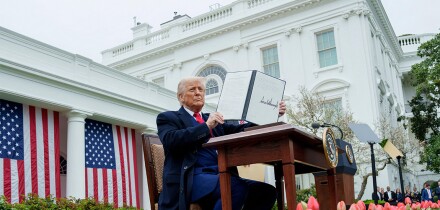Implied volatility on the short end of the dollar/yen curve shot up last week reaching 9.6% for one-month options last Wednesday before the first strikes against Iraq, up from 9.2% the previous week. One-week options, meanwhile, rocketed to 10.5%, up from 9.5% over the same period, said a trader in New York. Dollar/yen was trading at a several month-high at JPY120.60, up from JPY118.5 the previous week.
Hedge funds and bank proprietary desks were buying short-dated protection in the form of at-the-money straddles, with much of the volatility on the currency pair arising from movements in spot, said the trader. Over the last several months investors have been bearish because of the war, which led to investors buying euros, Swiss francs, yen and the Australian dollar. The U.S. dollar, sterling and Mexican peso, meanwhile, were shunned, he explained. These positions are now being unwound.
Robert Lynch, foreign exchange strategist at BNP Paribas in New York, noted that in contrast to the yen buying that traditionally occurs with the Japanese fiscal year-end, yen selling has dominated activity this year. This movement has been supported by the upward trend in the greenback, which last week made gains against all major currencies. Continued restructuring of Japanese industry is likely to initiate further repatriation as banks sure up their balance sheets by liquidating foreign assets, he said. This, alongside the country's current account surplus, will imply a generally stronger yen, which is expected to strengthen to JPY109 by the end of June, he concluded.
USD/JPY Spot & One-Month Implied Volatility






